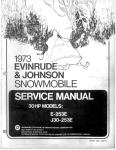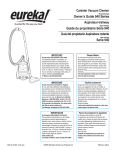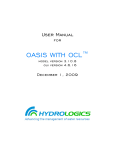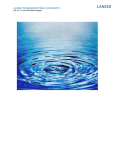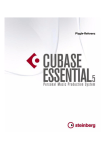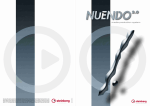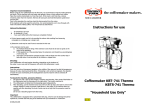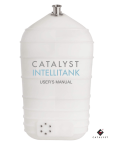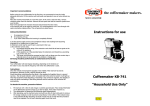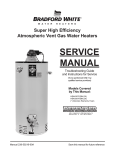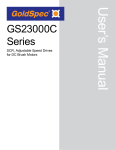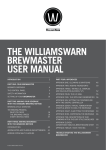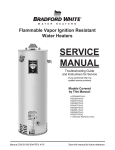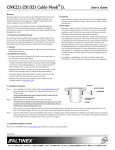Download Zymatic® User Manual
Transcript
Zymatic® User Manual Important Safety Information ! Read all instructions before operating the machine. ! Exercise common sense while operating the Zymatic. ! Always use the keg cozy to shield the hot metal of the keg. ! Close supervision is needed when used around children. ! Allow machine to fully cool before removing or replacing parts. ! Do not operate with a frayed or broken plug. ! Test the GFCI circuit breaker on the plug before every brew. ! Do not remove step filter from the Zymatic unless in pause mode or brewing is completed. ! The step filter and contents may be hot when removing from the machine. ! Do not immerse or soak the machine. ! Make sure all hoses are connected before starting a recipe, rinse or cleaning cycle. ! There are no user serviceable parts inside. To avoid risk of electric shock hazard do not disassemble the Zymatic. ! Various surfaces can get extremely hot during the brewing cycle, use caution when handling the keg, hoses and components. ! Do not remove the hose clamps, hot liquid spray may result. ! Do not remove the keg attachments while brewing. Unpackthe the Zymatic ® Unpack Zymatic ® P. 1 Foam Trap T. 1 Bottle of Antifoam Q. 2 Needle-less Syringes U. R. 21Cleaning Package Tubes of PBW S. 11Keg Dishwasher V. Cozy Tablet T. 1 Bottle of Antifoam J.J. 1 1Step StepFilter FilterLid Lid K.K.1 1Adjunct Compartment Adjunct Compartment L. 4 Hop Cages and Lids Hop Cages and Lids M.L. 1 4Adjunct Screen Adjunct N.M.1 1Step FilterScreen O.N.2 1Mash StepScreens Filter A.A.Zymatic® Zymatic® B. 1 6’ Power Cord 6’ Power C.B.1 1USB Cable Cord D.C.1 125’ Ethernet USB CableCable E. Diptube Cleaning Brush D. 1 25’ Ethernet Cable F. 1 In Hose (gray ball lock) G.E.1 Diptube Out HoseCleaning (black ballBrush lock) H. 1 Party Tap F. 1 In Hose (gray ball lock) I. 1 Transfer Tube G. 1 Out Hose (black ball lock) H. 1 Party Tap Included, not pictured: O. 2 Mash Screens (different sizes) 1 plastic hose wrench P. 1 Foam Trap 4 small white nylon washers Q. 1 Needle-less Syringe 4 silicone bands 1 Keg Seal 1 airlock 1 Party Porter ingredient kit R. 1 Package of PBW I. 1 Transfer Tube S. 1 Dishwasher Tablet J A K A C A L A P M A A V A Q A N F A O R A A A B E A A G S A A T A C D H I A A A A U A Gather Materials Before You Brew Zymatic (A) (assembled with Power Cord (B), In Hose (F), Out Hose (G), plastic hose wrench and 2 white cone seat seals) Step Filter Lid (J) Step Filter (N) Mash Bottom Screen (O) Adjunct Screen (M) Anti-Foam (T) Keg Cozy (T) 5-gallon Corny Keg Keg Seal Water (amount varies by recipe) Recipe kit (grains, hops, yeast) Post-Brew Deep Clean Zymatic Step Filter (N) Dishwasher Tablet (S) 1 gallon of water 2 large containers for water 2 Cleaning Tubes (U) Corny Keg 5-gallon Corny Keg (with wort) Keg Seal Ice 1 gallon of water 5-gallon bucket Yeast During Your Brew Zymatic Airlock Miscellaneous Sampling from the Sampling Port Needleless Syringes (Q) Keg Cleaning Diptube Cleaning Brush (E) Pro Brewers Wash (R) Sanitized water or alcohol Racking/Transferring Step Filter Lid (J) Transfer Tube (I) Adjunct Compartment (K) Rinse Cages (L) Zymatic Party Tap (H) Step Filter (N) Step Filter (N) Non-WiFi Internet Connection Adjunct Screen (M) 2 large containers for water Mash Top and Bottom Screen (O) 1 gallon of water Foam Trap (P) 2 Cleaning Tubes (U) Sampling from Keg/Serving Ethernet Cord (D) Firmware Updates USB Cable (C) How the Zymatic® Works Mash Heat To heat the water or wort up to either mash or boil temperature, the Zymatic will bypass the grain and hops in an area of the Step Filter called the Pass Through. The Pass Through is Grains go in the mash compartment, where wort is filtered through the mesh false bottom and recirculated through the keg and Zymatic, which controls the temperature. the narrow area between the Mash Compartment and the Adjunct Compartment. When water or wort is heating up, it passes through directly to the bottom of the step filter, where it circulates through the drain and back into the keg. The Zymatic has been calibrated to keep the water level in the bottom of the step filter below the grain and hops, so they are only incorporated when the recipe calls for it. Boil Hops are boiled in cages in the Adjunct Compartment. Each cage corresponds to a timed addition to the boil. The cascading motion caused by the Adjunct Compartment mimics manually adding hops to a boil pot. When a new hop addition is added, the cascade motion continues to boil the previous addition, while keeping the others dry until they are added. 1 2 3 4 Operating the Zymatic® Selector Knob OLED Display twist to scroll press to select On/Off Switch Step Filter Inline Filter Drip Tray OUT Hose connects to OUT post of keg controls flow into Step Filter IN Hose connects to IN post of keg controls flow into keg Display Main Menu Brew a Recipe Circulate: Will run the keg and drain pump while displaying the Select to see the list of recipes synced to your Zymatic, then current temperatures. Do not select this option if you do not select one to brew. have a Step Filter inserted and a keg or tubes connected to your Clean/Rinse ball locks. System Diagnostics: This option will lead through a Clean: Use this program for a deep clean every 5 brews with a diagnostics test that will allow PicoBrew to help you figure out dishwasher tablet. the cause of any issues you may run into with your Zymatic®. Rinse: Use this program after initial set-up and after every brew Help from PicoBrew: Select if you are seeing any issues with to rinse out your machine. your machine and your Zymatic® will send an error log and Machine Set-Up Ethernet: Use to check your Ethernet connection. You must contact customer support at PicoBrew. Continue from Last Brew: If for some reason your Zymatic® ran into a power fault or any other errors and stopped your brew have an Ethernet cable connected. and it is now safe to continue your brew, you can select this WiFi: Use to check your WiFi connection. option to continue where you left off. Account Sync: Use to sync recipes to your account if it didn’t automatically sync. Help Drain: Will drain the machine for 5 minutes or until you manually press stop. About Zymatic Information on account information, serial numbers, and firmware version. Display Brew Menu (Pressing the selector knob during a brew will bring up a menu, while the brew continues normally.) Continue Leaves the menu and continues the brew normally. The time and temperature regulation continues while you are in the menu, although it will not move to a new step until you leave the menu. Next Step Will skip immediately to the next programmed step in the brew. It does not recognized programmed drains, however, so use caution if you are skipping through during mash, as it will not automatically drain. Drain Flow from the keg will stop, and the Zymatic® will drain the step filter until you press Continue. Exit Brew Exits brew immediately and goes to the main menu. Use caution as this will also skip all programmed drains and will not continue where you left off. Set Up the Zymatic® 1) Set the Zymatic® on a sturdy, level surface, such as a kitchen counter. Peel off any remaining white protective film from all surfaces. 2) Attach the hoses to the machine (Parts F and G) using the included black plastic wrench. a. Place one white nylon washer inside of the flare nut fitting on the end of each hose before attaching the hose to the Back Front Zymatic®. This prevents the hose from pumping air or leaking. b. Make sure the OUT hose (with the filter) is the closer of the hoses toward the back of the Zymatic®. c. Hand tighten first by screwing the flare nut onto the Zymatic® and then use the black plastic wrench to tighten it further. d. Keep the black plastic wrench and extra nylon washers with this manual in case they are needed for any repairs. IN hose OUT hose 3) Plug the power cord into the back of the machine and into an outlet. The Zymatic® requires at least a 15 amp outlet (standard in most houses.) Do not overload an outlet with appliances that will use more than 15 amps. 4) If using Ethernet, plug in an Ethernet cord into the back of the machine. If you are using WiFi, skip this step. WiFi set up will be completed upon the initial startup of the Zymatic® with on-screen instructions. Rinse Before you start your brew, you will need to do a quick rinse of the machine. 1) Set up your step filter in the following manner: a. Place the smaller of the mash screens into the mash compartment, resting on the bottom ledge. This is the false bottom that the grain will sit on. b. Place the adjunct screen on the other side of the step filter, also resting on the bottom ledge. c. Place the lid on top of the step filter, ensuring that the holes are aligned correctly. 2) Slide your step filter into Zymatic®. There should be a little resistance as the drain slides into place and the step filter presses against the back of the Zymatic®. The step filter will stick out of the machine by about an inch to allow for easy removal. 3) Turn on the Zymatic®. The knob to the right of the screen allows you to scroll and click through menus. Follow the on screen instructions if you are using WiFi. 4) To begin your rinse, you will need to fill your keg with approximately 1 gallon of clean, cold water. 5) Once you have filled your keg, place it next to the machine. The keg may either sit on the floor or up on a counter. The keg will become very hot during the brew, so make sure to keep it out of reach of small children, keep the keg cozy on the keg during all brew sessions, and handle with care. 6) Connect the keg to your Zymatic® using the ball locks attached to the hoses. The black ball lock connects to the OUT post of the keg, while the grey ball lock connects to the IN post. Lift the ledge of the ball lock, press it down on the appropriate keg post, let go of the ledge and press down firmly. The ball lock will make a clicking sound when it fits into place. 7) On the Zymatic® screen, you should be greeted with the welcome screen. Press the selector knob once to get to the menu. Select “Clean/Rinse.” There will be a few preloaded options. Select “Rinse” and the Zymatic® will begin the initial rinse cycle. 8) Once you have finished the rinse cycle, the Zymatic® will return to the main menu. Remove your step filter and dump out any remaining water. Give it a quick dry with a towel and it is ready for loading ingredients. 9) Disconnect the keg from the machine. To disconnect the ball locks, pull up on the ledge of the ball lock, and it should pop off easily. Dump out the water used in the rinse cycle. Prepare Ingredients 1) Fill your keg with the amount of water listed on your recipe. Use a gallon jug and measuring cup or a scale (8.3 lbs water = 1 gallon of water) to measure your water. 2) Place the black Keg Seal on the keg. 3) Assemble the foam trap by dropping a few drops of antifoam on the disk and placing the foam washer between the spindle and trap. Slide the foam trap into the hole in the black lid. 4) Measure out (and grind, if necessary) your grain. Set up your step filter by placing the screens into the step filter according to steps 1a and 1b in the Rinse step. Pour into the mash compartment of your step filter on top of the false bottom. 5) Smooth your grain into a flat surface and place the false top on the top ledge over the grain. 6) Measure out your hops and place into the appropriate cages. Put lids on each cage and make sure they are on tight 7) Place each cage into the adjunct compartment, with the longest boiling hop going into the first compartment with the notch taken out. 8) Put the lid on the step filter, ensuring the holes are aligned correctly. 9) Slide the step filter into the Zymatic® until it is pushed up against the back wall. The step filter will protrude slightly over the drip tray. 10) Hook up your keg to the Zymatic® by connecting the black ball lock to the OUT keg post and the gray ball lock to the IN keg post. 11) Select your recipe and brew! Brew Your brew will require little to no work on your behalf for the next few hours. Make sure to read through the recipe notes to see if you need to add sugar, clarifying agents, or any other special ingredients to the keg during the brew. While your Zymatic® brews, you can watch its process online. A chart with the current temperature of the wort and the heater should appear on your account page while brewing. Chill After your brew finishes, you will need to chill your wort and then pitch your yeast. Chilling your wort beforehand is vital, as high temperatures will kill your yeast, resulting in no fermentation. 1) After your brew is completed, the Zymatic® will pause and beep to alert you to prepare your chilling set up. Pressing once will silence the alarm. A second press will begin the chill process. 2) While the Zymatic® is paused, carefully pull off the keg cozy. Caution: The keg will be extremely hot! 3) Fill a 5 gallon bucket or large container with some cold water and ice. Carefully place the keg into the ice bath. 4) Select “Continue” and the Zymatic® will resume with the chill cycle. 5) Monitor the ice bath, as the keg will quickly melt the ice as it chills. 6) The temperature will continue to be monitored by the Zymatic® as it chills to the pitching temperature selected by the recipe. 7) When the temperature reaches pitching temperature, the wort will continue to circulate for 10 minutes to ensure all the wort is at the same temperature in the keg. 8) After the chill cycle is complete, the Zymatic® will drain the remainder of the wort in the step filter into the keg. 9) When the brew is complete, it will return to the menu. Disconnect the ball locks from the keg. There are many methods that could be used to chill your wort – a copper coil chiller, sticking the keg in a freezer, leaving overnight, or stirring the wort while in an ice bath. We encourage you to find the method that best suits you. Pitch Yeast There are two different kinds of yeast that are sold: dry and liquid. Either type of yeast can be used to ferment your wort. If you are using liquid yeast, make sure to take it out of refrigeration when you start your brew to give the yeast time to warm up. Dry yeast does not require any preparation, although some brewers prefer to proof their yeast. 1) After your wort is sufficiently chilled, remove the foam trap from the Keg Seal, remove the Keg Seal, and pour in your yeast. Your keg may have a large head of foam from the chill cycle. This is normal; just make sure to give your keg a few swirls to incorporate the yeast fully into the wort. Replace the Keg Seal after pouring in the yeast. 2) Sanitize your airlock and fill with sterile water (or liquor) to the fill line. The airlock keeps the keg properly sealed against any wild yeast or bacteria, while still allowing it to release CO2 as the yeast ferments the wort. 3) Place the airlock into the hole in the Keg Seal until it feels snug. Carefully place your keg in a temperature controlled area, such as a garage or closet or fermentation chamber, for fermentation. Fermentation can take anywhere from a week to several weeks depending on the brew. Make sure to read your recipe for fermentation specifics. Clean 1) Pull your step filter out of the Zymatic®. Remove the lid, the false top, the adjunct compartment and the adjunct false bottom. 2) Carefully dispose of spent grains, taking care not to accidentally toss the false bottom. Rinse out the step filter so that it is free of debris. 3) Place the empty step filter in the Zymatic®. 4) Connect a cleaning tube to both ball locks by snapping the ball lock onto the black end of the tube the same way you would attach the ball lock to the keg post. Place the black (OUT) ball lock’s cleaning tube into a container of approximately 1 gallon clean water. Place the gray (IN) ball lock’s cleaning tube into an empty container for the dirty water. 5) On the Zymatic®, chose the Rinse cycle. This will cycle the clean water through the hoses in the machine, through the step filter, and into the empty container. 6) After the Rinse cycle, remove the step filter from the Zymatic®. All pieces, including the step filter and all pieces of the foam trap, can be washed in the dishwasher. Fermentation For best results, ensure your keg stays in a temperature controlled area where it can stay undisturbed for a few weeks. The exact temperature range depends on what yeast you’ve selected. While your keg ferments, you will likely see the water in your airlock bubbling for the first few days. This is a good sign of active fermentation. As your yeast ferments the beer, it releases CO2 and the CO2 is released through the airlock. The bubbling will slow down or completely stop when fermentation is nearing completion. Use a hydrometer to take a gravity reading after the recommended fermentation time is over to make sure the beer has fermented completely. If your beer did not ferment to the desired gravity (“stuck fermentation”), you may have fermented in too cold of an area or pitched with weak yeast. Try either moving the keg to a warmer area or pitching more yeast. After you are satisfied with your fermentation, you may either rack your beer right away or keep it in cold condition (refrigerator temperature) for a few days to drop the yeast out of suspension and give your beer a bit more clarity. Rack Racking your beer is the process of transferring your beer out of the fermenter and into another vessel, typically a serving keg. This is an important step because it removes the beer off of the yeast cake sitting in the bottom of the keg. If beer is left on the yeast cake for too long after it finishes fermenting, it will cause off flavors. To rack your beer via the transfer tube included with your Zymatic®, you will need a CO2 tank and regulator to pressurize your keg, as well as either a 2.5-gallon keg or a separate 5-gallon keg. Your regulator will allow you to control the amount of CO2 coming out of the tank. Attach a gray (IN) ball lock to the hose on your regulator if it does not already have one attached. Ensure that all parts that may come into contact with your beer are sanitized before starting. If you do not wish to rack via CO2 and a transfer tube, you can use a siphon – just be sure to avoid any trub or yeast that has settled at the bottom of your keg. 1) Try not to move your fermenter keg as it will stir up any yeast and trub sitting at the bottom of the keg. 2) Remove the airlock and Keg Seal from the keg your fermented beer is in. Replace the Keg Seal with the metal lid that came with your keg. 3) Ensure that the keg you will be racking into is sanitized. Leave the lid off of this keg. 4) Hook up the transfer tube between the two kegs by connecting the ball locks to the OUT posts of both kegs. 5) Set up your CO2 tank and set it to a low pressure of 4-6 psi. 6) Connect your CO2 tank to the IN post of the fermenter keg. This will fill your keg with CO2 and push it out of the keg through the transfer tube and into the diptube of the clean keg, which will fill slowly from the bottom up to minimize any splashing. 7) Allow the keg to fill until it is full or you run out of beer. The bottom few inches of beer in the fermenter keg will be full of trub and yeast. The diptube of the keg included with your Zymatic® is cut shorter as to avoid the majority of the yeast and trub. 8) When you are finished racking. Unhook all ball locks, close the keg with a metal lid and ensure that it seals. Your beer is now ready to be carbonated. Carbonate To carbonate your beer, you can either keg condition or hook your keg up to a CO2 tank. Forced Carbonation 1) Using a carbonation chart or calculator, set your CO2 tank to the appropriate psi setting. 2) Hook up a CO2 tank to your keg’s IN post. 3) CO2 absorbs better in cold temperatures. Keep your keg and CO2 tank in a cold area while it carbonates. 4) Your beer will take about 5 days to carbonate fully. If you want to speed up the process, you can turn up your CO2 tank to about 20 psi for a few days and then turn it down to a low serving pressure, although this makes it harder to control carbonation levels. Keg Conditioning 1) Using a priming sugar chart or calculator, figure out how much priming sugar you need to carbonate your beer. This is dependent on the type of sugar, the type of beer, the headspace in your keg, and the amount of carbonation you desire. 2) Add the priming sugar to your keg. Any leftover suspended yeast will use the priming sugar to create CO2. 3) Leave your keg at fermentation temperature during conditioning to keep the yeast active. Keg Conditioning will take between 2 and 3 weeks. Links to Online Calculators and Charts Forced Carbonation Chart: o http://www.kegerators.com/carbonation-table.php o http://www.brewersfriend.com/keg-carbonation-calculator/ Priming Sugar Calculators: o http://hbd.org/cgi-bin/recipator/recipator/carbonation.html o http://www.northernbrewer.com/priming-sugar-calculator/ Deep Clean Every 5 brews, you will need to run a deep cleaning on your Zymatic®. The deep clean removes any buildup on the hoses, pumps, and heat exchanger from the wort and will keep your Zymatic® running smoothly and efficiently. For a deep cleaning, you will need a dishwasher tablet. If you have gone long stretches of time between brews, or have failed to clean your machine for more than 5 brews, you may want to use a stronger cleaning agent, such as PBW. (Caution: The deep clean heats up the machine to boil temperature, do not use any unsafe cleaning agents.) To begin the deep cleaning cycle: 1) Fill a keg with 1 gallon of water and hook it up to the Zymatic®. 2) Load your step filter with the mash false bottom and adjunct false bottoms. 3) Place the dishwasher tablet on top of the mash false bottom. 4) Place the lid on the step filter, ensuring that the holes are correctly aligned. 5) Slide the step filter into the Zymatic®. 6) Select Rinse/Clean on the menu. 7) Select Clean Cycle. 8) After the Clean Cycle is complete, it is important to rinse with clean water. Run 5 gallons of water through your machine by following the instructions for the Rinse cycle. The cleaning cycle will run for approximately 1 hour. You may notice the keg running empty, which will cause the flow from the nozzle to look erratic. This is normal – pulling air through the machine aids in removing the buildup. Care and Maintenance Cleaning the Inline Filter: On the Zymatic®, there is an inline filter that catches any stray pieces of grain or hops that escape to help keep the pumps and heat exchanger clean. This filter should be cleaned before every brew. Unscrew the filter and remove the screen. Rinse off the screen and scrub off any debris if necessary. Place the screen back inside and screw the filter on tightly. Cleaning the Zymatic®: To clean the outside of the Zymatic®, stainless steel cleaners are recommended. Follow the instructions on the bottle and only use soft cloths to wipe it down. Do not use abrasive materials or cleaners. Do not use cleaners on the LED screen. Cleaning the Step Filter, Cages, and Screens The Step Filter, Adjunct Compartment, mesh screens, cages, cage lids, foam trap (including spindle and fabric washer) are all dishwasher safe. Cleaning the Keg Cleaning your keg is extremely important – a dirty keg can lead to contaminated batches. Using a wrench, remove both keg posts and clean out any debris that is inside. Remove the dip tube and use the dip tube brush to scrub the inside. Use a scrub brush to loosen any hardened yeast or trub on the walls of the keg. We highly recommend using Pro Brewer’s Wash (included in your kit) to clean and Star San to sanitize your keg before the next brew. Advanced Techniques Sample port Your Zymatic® comes equipped with a sampling port on the IN hose. Standard size needleless syringes, such as the one that came with your kit, will fit into the sample port. You can use the sample port to draw a small sample of the beer for refractometer readings, tasting or using to proof yeast. You can also inject liquids into your beer using the sample port. To use, take a needleless syringe and twist it into the sample port. Once it is connected, draw your sample by pulling the plunger. Carefully unscrew the syringe and your sample will stay in the syringe, while the wort continues to circulate. Adding Sugar During Boil Some recipes call for the addition of sugars during boil. You can add sugars directly to the keg during boil by removing the Keg Seal and slowly adding it, giving the keg a few gentle swirls to incorporate it. Use caution while putting anything into the keg during the brew. The keg will be extremely hot and there will be steam. Use heat protection, such as a towel or potholder when handling the keg and Keg Seal. Adding Clarifiers If you wish to add any clarifiers to your beer that are typically added during the brew (such as whirlfloc, irish moss, or yeast nutrient) you can either place into a hops cage, dissolve it into a liquid and inject it using the syringe and sample port, or drop it directly into the keg. Use caution while putting anything into the keg during the brew. The keg will be extremely hot and there will be steam. Use heat protection, such as a towel or potholder when handling the keg and Keg Seal. Dry Hopping If your recipe calls for dry hopping after fermentation, you can sanitize a hop sock (a mesh bag) to hold the hops and drop them into your keg. Dry hop at fermentation temperature for 3-7 days, then rack your beer out of the keg and leave the sock behind, or carefully pull the bag out of the keg. Leaving dry hops in your beer for too long may lead to resin-y off flavors and haziness. Troubleshooting My Zymatic® won’t start. - Ensure the GFCI plug is securely inserted into the back of the Zymatic® and into your outlet. - Try resetting the GFCI by pressing “Reset” on the brick. The green light on the brick should turn off and back on. My Zymatic® just reset. - “Power failure”: Your Zymatic® is designed to detect power interruptions and offer you the ability to pick up brewing where it left off. So if your machine shows this error screen, you may have had a power fault. - “Error: #”: Your Zymatic® has just encountered a bug. Although PicoBrew has endeavored to fix all bugs in the Zymatic® firmware, our system has a “watch dog” system for detecting faults and recovering from them. If your system encounters a bug, instead of crashing, the system restarts so that you can continue brewing if the fault does not prevent it. If it encounters a bug that could harm the system by continuing, it will not let you continue the brew. Please report any such situation to PicoBrew Product Support! My Zymatic® has entered “Overflow” and keeps saying it’s in a “drain cycle.” - Your Zymatic® has a level sensor to detect if the drain has become clogged or if the step filter has become “backed up” and for some reason cannot drain. If it detects a backup condition, it will automatically enter a drain state to try to fix the problem. If it stays in this state, it is likely because the system cannot clear the backup. - If your Zymatic® does not leave the Overflow state on its own, you may have to remove the step filter. If you are removing the step filter, exit the brew first. Never remove the step filter while it is actively brewing. In this case, the step filter may be full of very hot fluid, so use extreme caution! - Your step filter itself may be the cause of the clog that is causing the “Overflow” sensor. Make sure to check all filters and screens to see if they are clogged with hot break (or potentially hops debris if a cage lid was not securely attached.) - If you cannot find the cause of the clogging, but your Zymatic® persists in the “Overflow” condition, please contact PicoBrew Product Support. My Zymatic® is leaking. - If you are finding puddles of wort underneath your machine or see it spilling from the sides, stop brewing immediately and remove your step filter from the Zymatic®. - Thoroughly check your Step Filter for any cracks in the plastic. - Check that both hoses are tightened. - If you suspect the spilling was caused by the nozzle missing the holes in the lid (in this case, there will be a large puddle of wort on the lid), please dry off all surfaces and check to see if the nozzle aligns with the mash hole in front upon restart. If not, please contact PicoBrew Product Support. During mash, the fluid level is not covering my grain and I didn’t hit my target gravity. - This is a sign of a slowed flow, typically caused by a lack of cleaning. Try a deep clean on the machine and include 1 tablespoon of Pro Brewer’s Wash, especially if you haven’t cleaned the machine recently. Remember to clean out the inline filter after every brew. - Make sure to use the amount of water given in the recipe. If you are emptying your keg of water before the mash compartment fills up, you will end up with dry grain. During a heating cycle or a boil cycle, the fluid level is rising into the mash. - This is a sign of a slowed drain pump, typically caused by a lack of cleaning. Try a deep clean on the machine and include 1 tablespoon of Pro Brewer’s Wash, especially if you haven’t cleaned the machine recently. There is no flow into or out of the keg during a brew. - Make sure your ball locks are correctly attached. You should hear a small click when pushing them onto the keg posts. - Make sure your dip tube is not clogged. I am consistently missing target gravity, even when following the recipe. - If you are consistently low on gravity, there are a few things that could be interfering with your efficiency. Water chemistry and grind of the grain are the two most likely factors. Most cities have a water report available online for free – if you have very soft or hard water, it may not be ideal for your mash and you may need to use brewing salts to amend your water. Grind size of the grains can vary with different homebrew shops – the Zymatic® can handle finely ground grains without getting a stuck mash, so a finer grind may be the solution to your low efficiency. My display went black, but the Zymatic is still running. - Check the back of your Zymatic® and look at the fan in the top center. If the Zymatic® is on, the fan should be running. If it is not running, your display was likely overheated and shut off. Please contact PicoBrew Product Support for further information. My hops cage lids are too loose and keep popping off. - This is an issue that has happened with past materials and designs of the hops cages. If this does happen to you, please contact PicoBrew Product Support. Included with your kit are 4 orange silicone bands that can be wrapped around a cage if a lid is too loose. If you have any problems, questions, or comments, contact PicoBrew: Email: [email protected] Submit a Support Request Ticket on http://www.picobrew.com Support Forums: http://picobrew.com/forum/






























